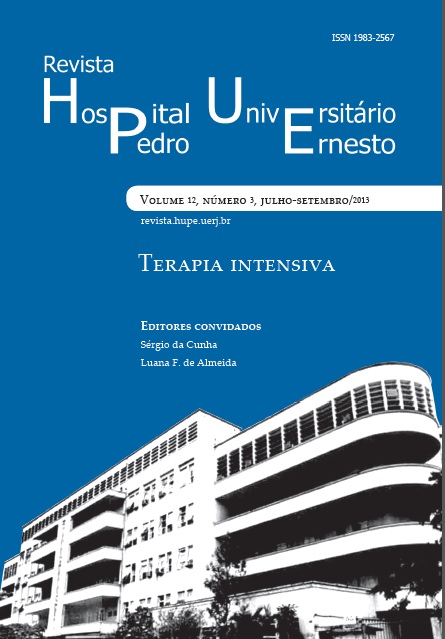Sedation, analgesia and neuromuscular blockade in the intensive care unit
DOI:
https://doi.org/10.12957/rhupe.2013.7537Abstract
Critically ill patients are invariably anxious, agitated, confused, uncomfortable and/or withpain. In this context, analgesics and sedatives are widely used in intensive care units (ICUs). Sometimes, in more specific cases, neuromuscular blockade is also used. The administration of sedatives, analgesics and neuromuscular blocking agents in the ICU has its own aspects and in many cases their use differs from that found in the surgical environment. In the ICU, due to the worse clinical status of patients and prolonged treatment time required, achieving adequate but not excessive sedation is a complex process. Sedatives and analgesics used in the ICUs are extremely potent and the needs and metabolism of these drugs in critically ill patients are often unpredictable. Although ICU physicians know that treatment with sedatives and analgesics can influence the evolution of the clinical status of their patients, there are still gaps regarding the recognition and management of pain and stress. Physicians should be aware of the effects of each drug and should employ strategies that maximize benefits while minimizing the risks. Both excessive as insufficient sedation are harmful. In this field, important advances have been achieved by goal-directed titration of medications, thereby avoiding excessive or insufficient effects. Aiming to improve the care provided to critically ill patients, fundamental concepts of analgesia, sedation and neuromuscular blockade in the intensive care unit are presented. The concept of palliative sedation with the purpose of reducing awareness, provide comfort and relieve the patient’s distress or other intolerable and/or refractory symptoms is also presented and discussed.Downloads
Published
2013-09-30
Issue
Section
Artigos


